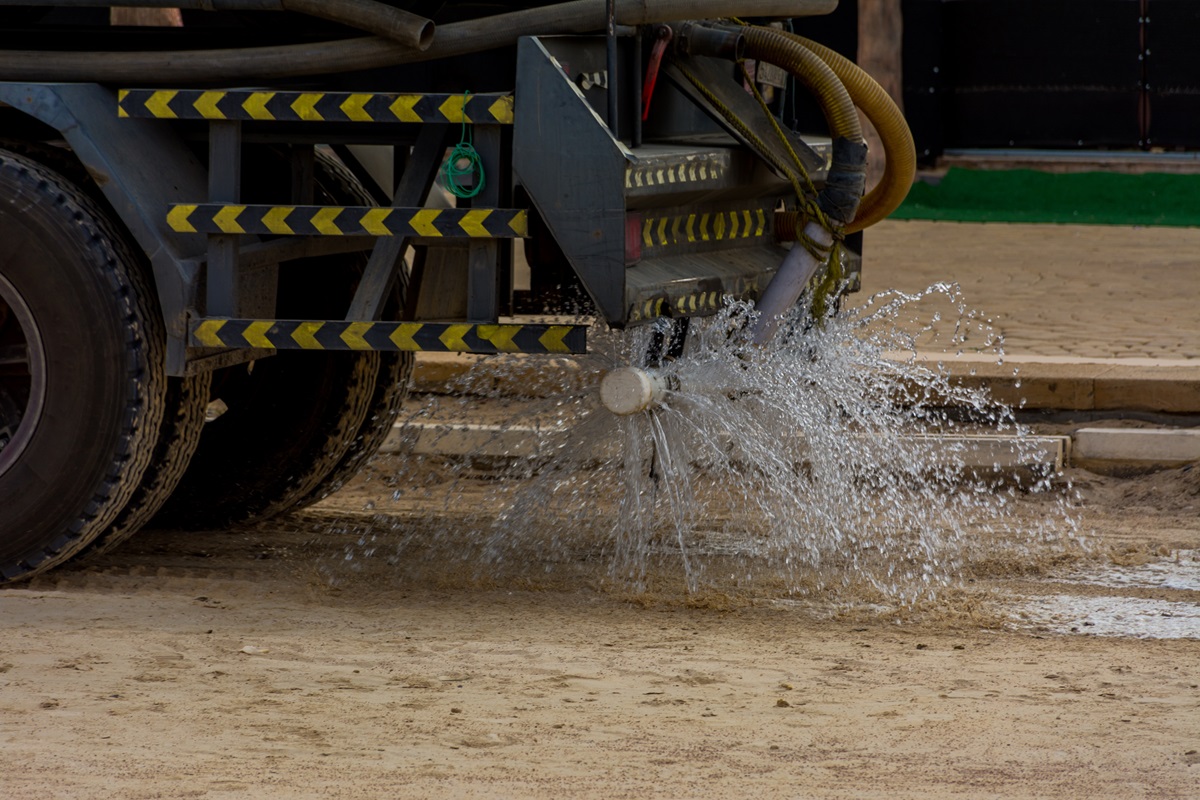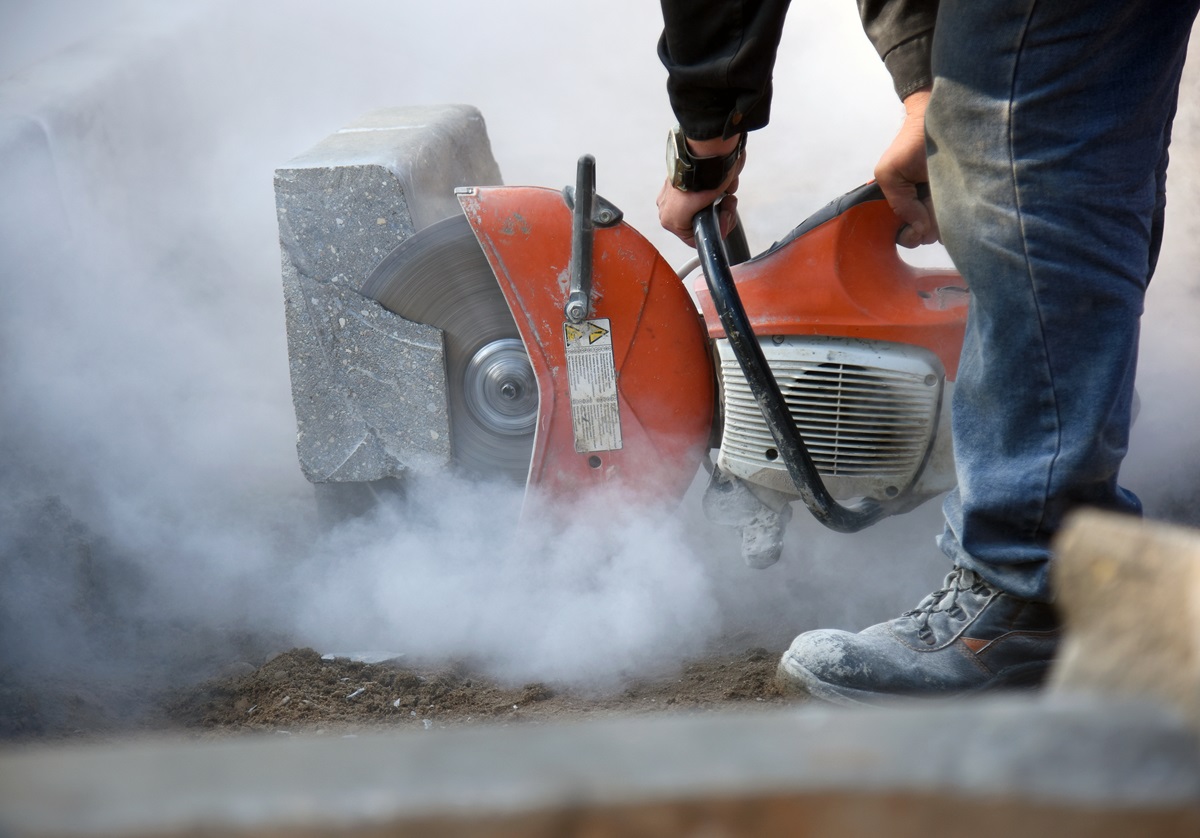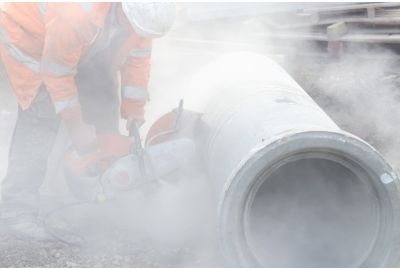Dust is a constant challenge that can not only pose a health risk to workers, but it can cause tools and building work to get dirty. Unfortunately, it is an inevitable by-product of construction work, particularly during the drier months of the year.
With it being harmful to the environment and the people working on or living close to a site, it is vital that the correct construction dust control measures are put in place to minimise its impact.
Many jobs, such as cutting materials like concrete and wood, can create dust on a construction site. When the ground dries out, it is natural that dust will form from the soil and gravel, and it can be made worse when heavy vehicles are being moved across the site.
In this guide, we take a look at the regulations around dust control and explore the temporary protection solutions that can be used to control construction dust.
Are there construction dust control regulations?
The Control of Substances Hazardous to Health (COSHH) Regulations state that you must protect against the risks from hazardous construction dust.
The law places duties on all those involved in construction work, and according to the HSE, there are three key points you need to consider when it comes to construction site dust control.
- Assess: It is recommended that you plan and implement guidelines for controlling dust from construction sites, identify health hazards, assess them, and involve workers in managing the risks.
- Control: After you have clear plans in place, you need to act on them by preventing risks before work starts, controlling any remaining risks and training workers.
- Review: This stage involves supervising workers, maintaining the controls you have in place, and monitoring these controls to ensure they are working and acting on any issues.
Eco Online says that as an employer, you need to be proactive when it comes to dust control: “Taking a proactive approach will strengthen your safety culture and drive safer outcomes that make a positive difference.”
ALSO READ: What is the best way to protect carpets?
What are effective ways to prevent dust?
Many temporary protection solutions can help control dust on construction sites. Let’s look at some of the options.
- Use dirt trap mats.
- Use water spraying systems.
- Erect dust barriers.
- Apply dust binders to surfaces.
- Implement ventilation systems.
- Educate and train workers.
Use dirt trap mats
One of the most popular construction dust control products that can be found on many building sites across the UK is dirt trap mats.
These mats are a cost-effective way to contain dust and dirt during any refurbishment work you are carrying out. These products can also be called sticky mats or tack mats, as they have the ability to remove mud, dirt and debris from boots, wheelbarrows and other products to help you keep floors clean and safe.
The dirt trap mats at Proguard contain over 30 layers of tacky plastic sheets, meaning ,they will trap dirt, and then you can peel it away after using them. These mats are environmentally friendly as they are made from a renewable plant-based material that reduces CO2 emissions.
The dirt mats not only prevent dirt and dust from transferring into clean areas, but they also capture 99% of all foot-borne contaminants.
Use water spraying systems

If the ground has dried out, it is natural for more dust particles to be created, especially if there are lots of vehicles coming in and out of the construction site you are working on.
Watering areas with a water spraying system will dampen the work area and reduce the dust created.
If you are watering a construction site, you need to carefully manage it and maintain it so that the amount of water and the timing of when you do it is correct. The last thing you want to do is to overwater a section of your site, which causes water run-off that could impact biodiversity.
Erect dust barriers
By erecting physical barriers, you can contain dust within the work zone, and this can be particularly useful for any indoor construction work that is taking place.
Erecting dust barriers has many benefits, including protecting the health of your workers and reducing the impact dust has on the quality of the product. If dust gets into a product at any stage of the production process, it can greatly impact the product quality.
Dust can contaminate raw materials, and it can affect the finishing process on the production line.
Some of the different types of dust barriers that you can purchase for a construction site are listed below:
- Cotton Twill Dust Sheets: These 100% cotton twill dust sheets are very popular with decorators for covering surfaces quickly to protect them from dust and paint spills.
- Polythene Sheeting: This is a versatile material that can be used as a temporary dust screen. Being a flexible material, you can drape and hang it wherever you like, and you can cut it to fit the space you are working in.
- Temporary Screening Props: This material is the simplest and most effective way of constructing a temporary dust screen. They are easy and quick to install and can be adjusted to fit most rooms.
ALSO READ: PPE recycling: How to do it on a construction site
Apply dust binders to surfaces
These solutions can be applied to surfaces such as unsealed or unpaved roads on a construction site.
Dust binders strengthen a surface by binding particles and increasing its density, which can help prevent dust and erosion from being created.
This method needs to be controlled carefully, and people implementing this method should have an understanding of how this process works and how you should avoid the binders contaminating groundwater.
Implement ventilation systems
If you are working in an enclosed space, dust can have a real impact on your workers, and one of the best methods to deal with this issue is to implement an effective ventilation system.
Ventilation systems can capture and remove dust from the air, and plenty of different systems are available. You will need to do your research to choose a system that is best suited for the job you are doing.
Most ventilation systems will have a hood that is placed as close to the dust source as possible,, and this will extract the dust that is being produced. It will either be discharged into the outside atmosphere or cleaned and returned to the workplace environment.
ALSO READ: How to protect your feet on a construction site
Educate and train workers

One way to help your workers understand the importance of construction dust control and the effects of dust is to educate and train them.
This can involve showing them how to properly use the protective measures you are putting in place and creating awareness that can lead to better compliance with dust protection guidelines.
Whether you are refurbishing a property or building a new home on a construction site, this guide highlights some of the best dust control measures you can put in place. At Beck, you can use various protection products, including door protection products or floor protection.
For more tips, guides, and advice, visit our news page.






